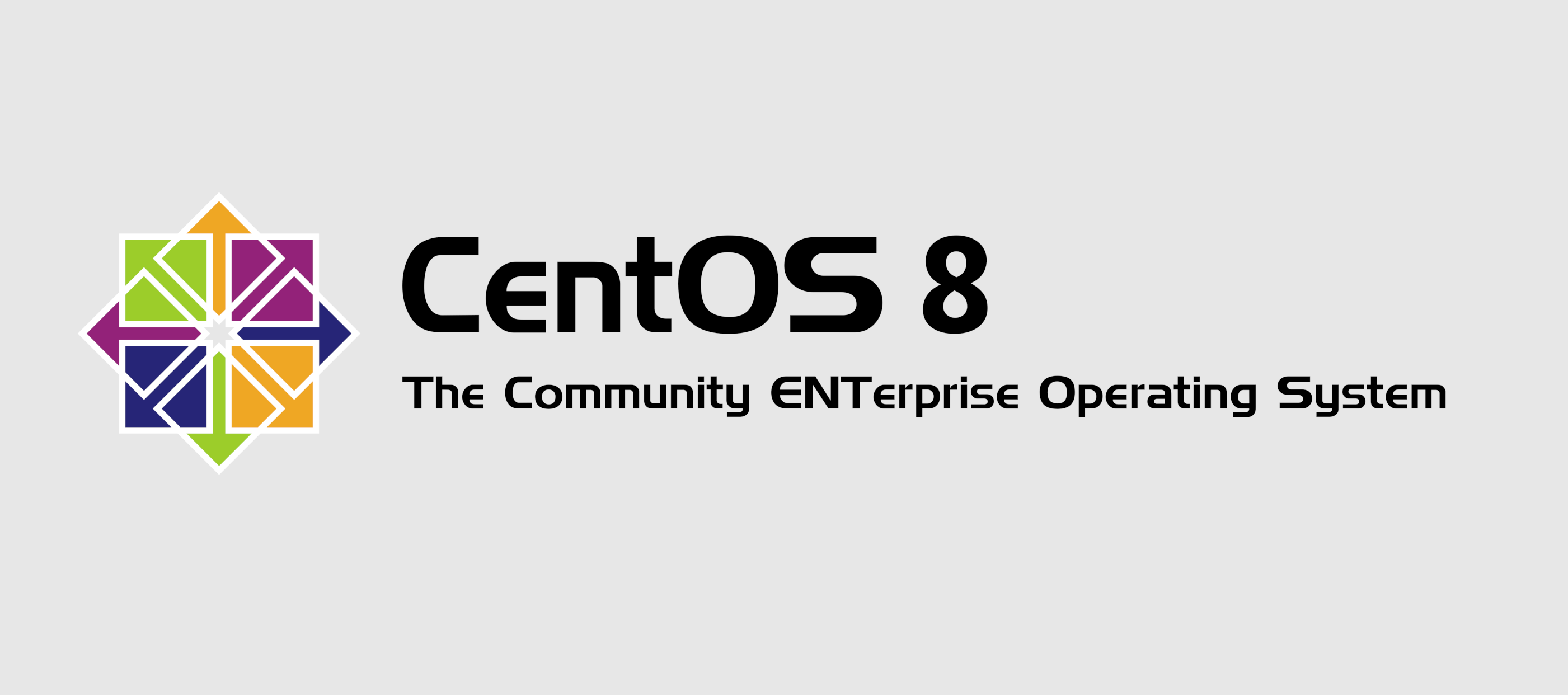
CentOS 8 Perfect Desktop Setup
Date: 12.11.2020 Author: tOP tIER cODER Category: Linux
This article showing how to turn the default CentOS 8 operating system into a perfect desktop, including:
- Additional repositories - EPEL, RPMFusion,
- Additional software:
- Graphics - GIMP,
- Office - LibreOffice (Write, Calc, Impress, Math, Draw), Adobe Reader,
- Browsers - Google Chrome, Firefox, Opera, Vivaldi,
- Internet - FileZilla, Skype, Thunderbird,
- Multimedia - VLC,
- CD/DVD/BluRay burning program - Brasero, K3B,
- Remote Desktop Connection - Remmina, LiteManager, AnyDesk, VNC,
- Virtualization - VirtualBox, VMWare,
- Programming - Visual Studio, Java, Eclipse, Bluefish,
- Utilities for NTFS and xFAT drives,
- Archive - 7zip,
- Fonts - Microsoft True Type Fonts,
- YouTube Downloader,
- Windows Emulator - Wine,
- Conneting to a VPN, Connecting to Samba Networks, and more...
Download CentOS 8, make a bootable DVD or USB, install as Workstation on your computer:
Download:
https://www.centos.org/download/
I assumed you installed Centos 8 as Workstation, Now we need to install the following softwares in CentOS to make it suitable for using it in official works as a Desktop Computing.
Open Terminal, copy next command to Login as ROOT:
su
Enter your ROOT password,
First of All we need Update your CentOS 8:
dnf -y update
EPEL Repository
We will add EPEL-8 to install the packages, midnight commander and wget:
dnf -y install wget mc acpid lynx epel-release
after that reboot your computer to start up with new kernel version, with command:
reboot
After restart, Open terminal again, Login as ROOT and insert following commands:
dnf -y groupinstall 'Development Tools'
GIMP:
dnf -y install gimp
LibreOffice:
Open next link in your browser:
https://libreoffice.org/download/download/
and download latest version for Linux (64-bit) (rpm)
or download from here:extract tar.gz archive with right click -> Extract Here
open RPMS folder in your Terminal with:
cd RPMS
then install with:
dnf -y localinstall *.rpm
ADOBE READER:
Download here Adobe Readerinstall in Terminal with cmd:
rpm -ivh AdbeRdr9.5.5-1_i486linux_enu.rpm
BROWSERS:
CentOS 8 comes with Firefox by default,
Google Chrome:
Need to be downloaded from original website:
https://www.google.com/chrome/index.html
In Terminal go to Download folder, then copy cmd:
dnf -y install google-chrome-stable_current_x86_64.rpm
Opera browser:
Download from here:Run cmd:
dnf -y install opera-stable_72.0.3815.207_amd64.rpm
Vivaldi browser:
Download from here:Run cmd:
dnf -y install vivaldi-stable-3.4.2066.94-1.x86_64.rpm
Internet:
FileZilla - multithreaded FTP client:
dnf -y install filezilla
SKYPE:
curl -SLo skypeforlinux-64.rpm https://go.skype.com/skypeforlinux-64.rpm
dnf -y install skypeforlinux-64.rpm
or you may download form hereThunderBird
soon
VLC:
dnf -y install https://download1.rpmfusion.org/free/el/rpmfusion-free-release-8.noarch.rpm
dnf -y install https://download1.rpmfusion.org/nonfree/el/rpmfusion-nonfree-release-8.noarch.rpm
dnf repolist
dnf install vlc.x86_64 -y
CD/DVD/BLU-Ray WRITER:
dnf -y install brasero k3b
Remote Desktop Connection:
REMMINA
dnf copr enable castor/remmina
dnf -y install 'remmina*'
LiteManager
Download from here:Extract and run
AnyDesk
Download from here:dnf -y install anydesk-6.0.1-1.el8.x86_64.rpm
VNC
Open Software Installer, type VNC and install remote desktop viewer.
Virtualization
VirtualBox
dnf -y install binutils kernel-devel kernel-headers libgomp make patch gcc make perl glibc-headers glibc-devel dkms elfutils-libelf-devel
Download package from here:then type next cmd to install:
dnf -y install VirtualBox-6.1-6.1.16_140961_el8-1.x86_64.rpm
VMware:
dnf install ncurses-compat-libs pcsc-lite-libs
then install your bundle file from official vmware website in Terminal with:
./VMware-Workstation-Full-15.0.3-12422535.x86_64.bundle
Programming
Visual Studio
Download Visual Studio for Linux here:dnf -y install code-1.51.0-1604600907.el7.x86_64.rpm
JAVA
Installing OpenJDK 8
dnf -y install java-1.8.0-openjdk-devel
Installing OpenJDK 11
dnf -y install java-11-openjdk-devel
To check what Java version is set as the default one, type:
java -version
If you want to change the default version, use the alternatives command:
alternatives --config java
ECLIPSE
soon
BLUEFISH
soon
NTFS support:
dnf -y install ntfs-3g ntfsprogs ntfs-3g-system-compression
Ntfs-3g provides also other very useful utilities to perform specific operations on a ntfs filesystem. Among the others: ntfsundelete which is used to recover files removed from a ntfs filesystem, ntfsresize which let us resize a ntfs filesystem without data loss, and ntfsclone which is used to clone, image and restore a ntfs filesystem.
ExFAT:
dnf -y install fuse-exfat exfat-utils
7ZIP
dnf -y install p7zip
Microsoft True Type Fonts
Download here:dnf -y install cabextract-1.9.1-1.i386.rpm
dnf -y install curl xorg-x11-font-utils fontconfig
rpm -i https://downloads.sourceforge.net/project/mscorefonts2/rpms/msttcore-fonts-installer-2.6-1.noarch.rpm
or Download from here:YOUTUBE Downloader
https://addons.mozilla.org/en-US/firefox/addon/video-downloadhelper/
Download here:tar xf net.downloadhelper.coapp-1.5.0-1_amd64.tar.gz -C /usr/local
/usr/local/net.downloadhelper.coapp-1.5.0/bin/net.downloadhelper.coapp-linux-64 install --system
WINE - Windows Emulator:
dnf config-manager --set-enabled PowerTools
dnf update
dnf -y install wine
VPN Client on CentOS 8
dnf -y install xl2tpd ppp NetworkManager-l2tp NetworkManager-l2tp-gnome
And now you can add VPN
SAMBA Client
dnf -y install samba samba-common samba-client
firewall-cmd --add-service=samba --zone=public --permanent
firewall-cmd --reload
systemctl start smb
systemctl enable smb
Open Nautilus or Files and type address (I assumed the folder address is 192.168.1.255/my_folder):
smb://192.168.1.255/my_folder
Replace the address with yours
Nautilus settings:
Open Nautilus (Files) got to preference (up left corner-right click-> preference->Views) and check Sort folders before files. At list columns check only Type.
Disable SeLinux
vim /etc/selinux/config
and change the line from:
SELINUX=enforcing
to
SELINUX=disabled
Gnome Tweak & Customization
dnf -y install gnome-tweaks
dconf-Editor
dnf -y install dconf-editor
Open dconf Editor -> org -> gnome -> desktop -> interface -> turn on clock-show-weekday
VNC Server:
firewall-cmd --add-service=vnc-server --permanent
firewall-cmd --reload
Go to settings -> Sharing -> Screen Sharing -> turn on, check Allow connections to control the screen,
Now, start Dconf Editor from the Application Menu of CentOS 8.
Click on I’ll be careful.
Click on org.
Click on gnome.
Click on desktop.
Click on remote-desktop.
Click on vnc.
Click on encryption.
Now, toggle OFF Use default value
Now, click on the dropdown menu of Custom value. Now, check none and tls-anon checkboxes.
Then, click on the tick icon as marked in the screenshot below.
The Current value should be [‘none’,’tls-anon’] as shown in the screenshot below. Now, close Dconf editor.
You may face some problems once you’re connected. Such as, you may see a black screen.
It’s easy to fix. To fix this problem, go to the Settings(in vnc viewer)
Click on Picture quality dropdown menu.
Now, set it to either High, Medium or Low. Then, click on OK.
It should be fixed.
.Done
